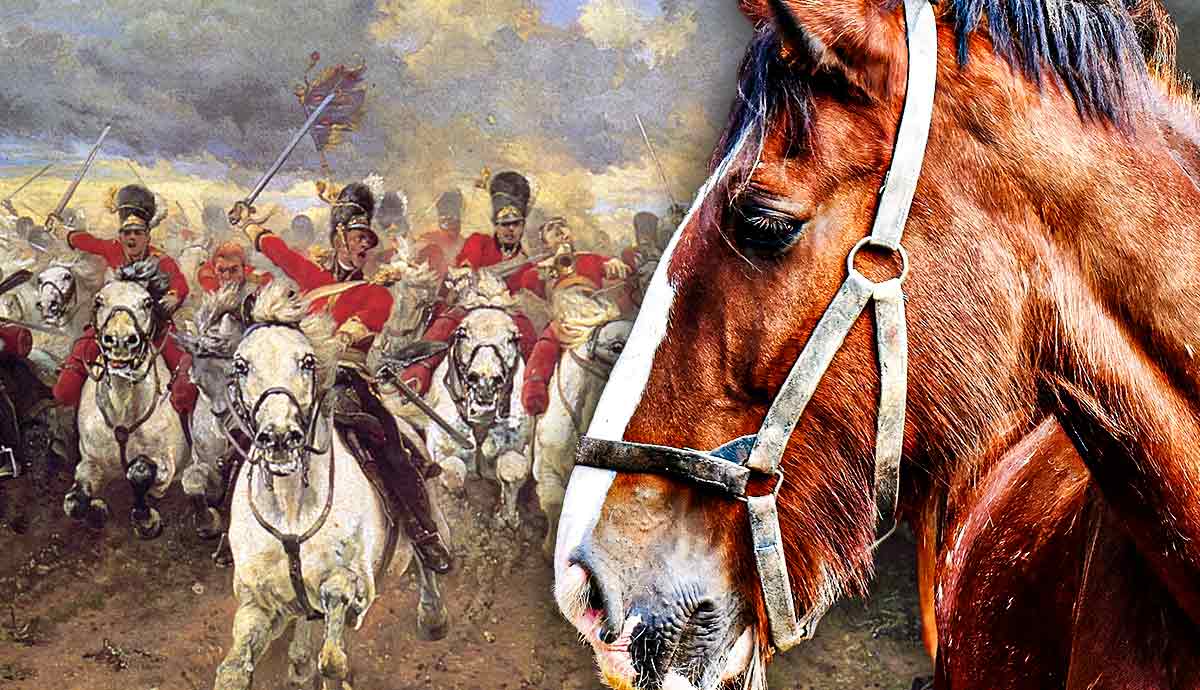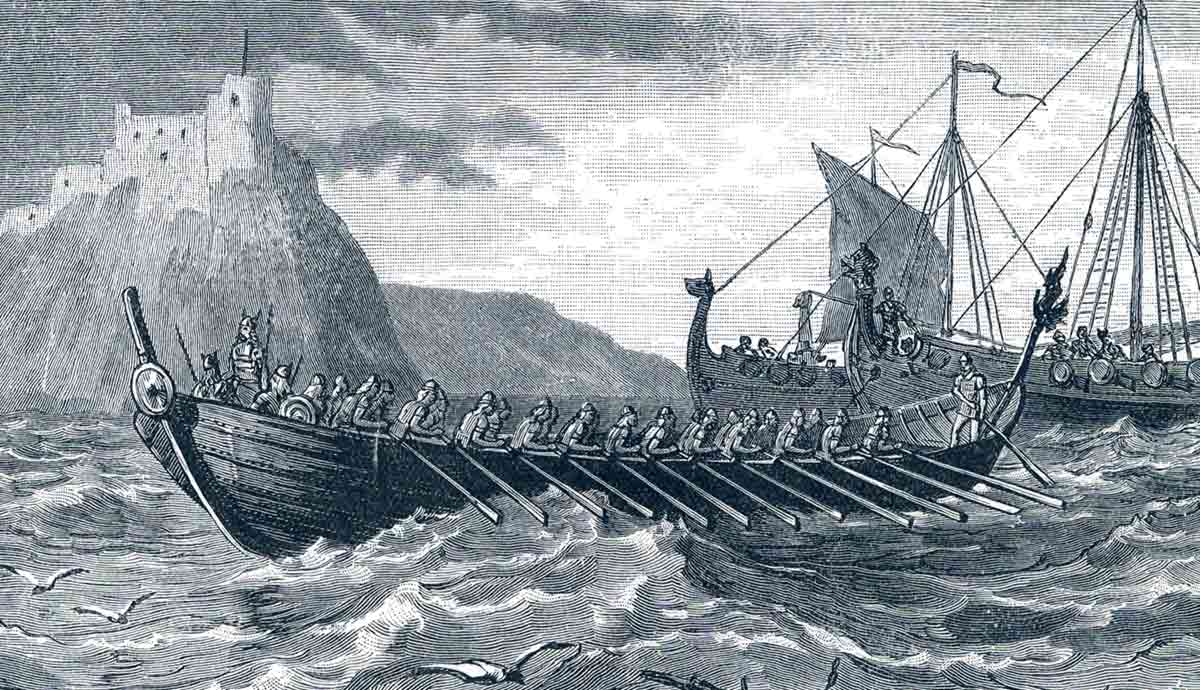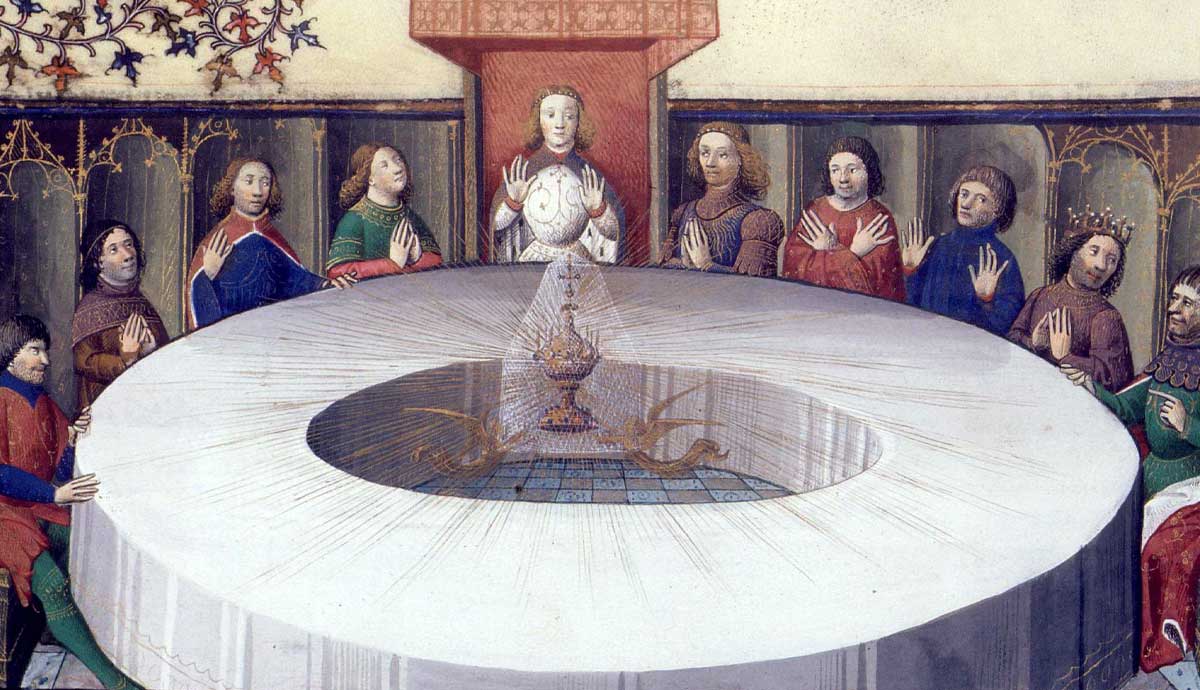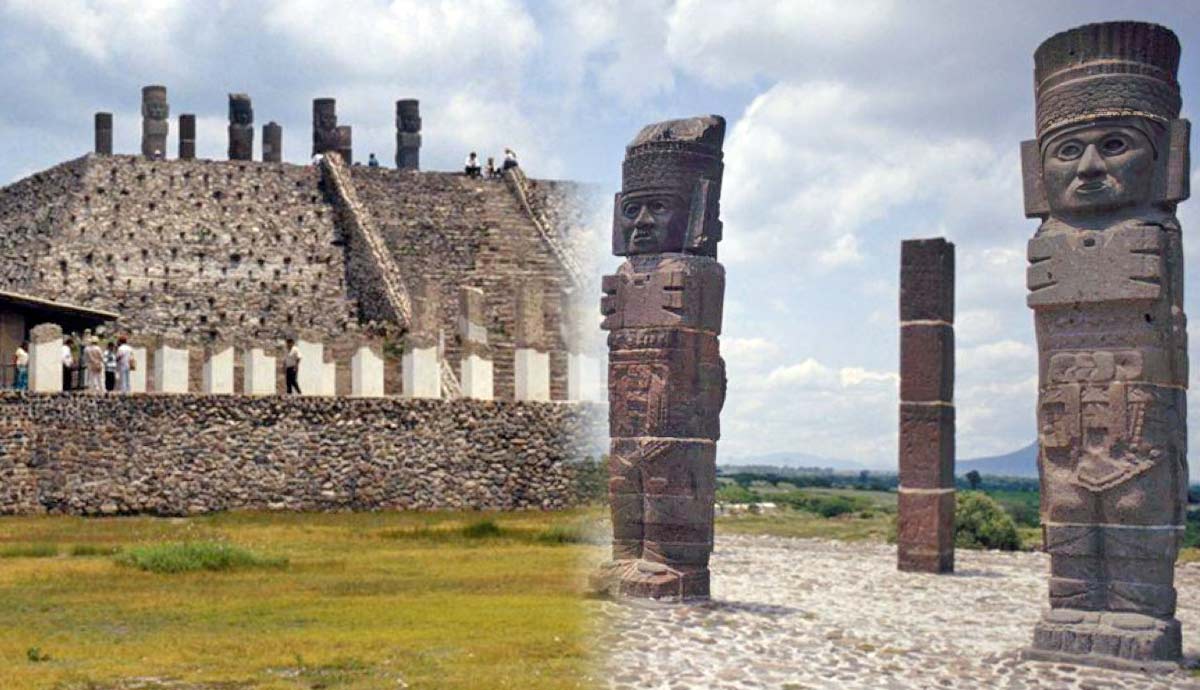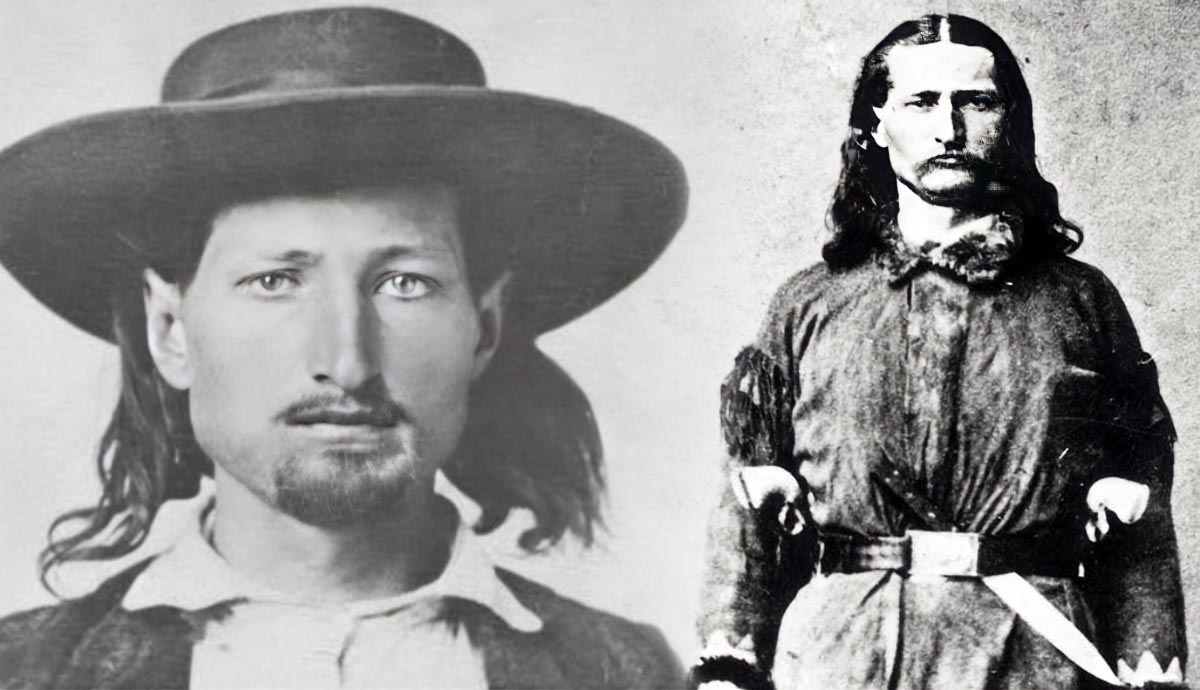
Wild Bill Hickok’s life story was subject to huge amounts of exaggeration. His deeds were told and retold in grandiose style to adoring audiences obsessed with tales of larger-than-life characters and their wild adventures.
Hickok, however, hardly needed the exaggeration. He was among the most dangerous men in the Old West and commanded respect, admiration, fear, and, for some, hatred. His life would go down as one of the most legendary in the history of America.
Wild Bill’s Early Life

James Butler Hickok entered the world on May 27, 1837, the fourth of six children born to William Alonzo Hickok and Pamelia Hickok (née Butler). His father was a staunch abolitionist, and it is claimed that their house in Homer (now Troy Grove), Illinois was a station on the Underground Railroad, a network of routes and safe houses used to transport escaped slaves to safety and freedom.
On May 5, 1852, William died of unknown causes. It’s possible that his death may have been linked to his activities trying to free enslaved people.
According to contemporary accounts, James had red hair and showed significant skill as a marksman. This skill served him well, as he and his brothers often went hunting to provide food for the family.

James’ first job was as a drover working along the Illinois-Michigan Canal, which connected the Great Lakes to the Mississippi River. However, his time in this profession did not last, and he traveled westward in search of better opportunities.
According to legend, this decision was forced upon him after he got into a fight with a fellow drover, Charles Hudson, who bullied James. The two came to blows and ended up in the canal, wherein James thought he had killed Hudson by drowning him. If this story is true, his decision to travel westward was an escape rather than a simple decision to look for better opportunities. Hudson was later said to have survived the encounter.
Wild Bill in Kansas

Before Kansas was incorporated into the Union as a state, it was a wild and lawless place that was known for its violence between pro- and anti-slavery groups. It was in this maelstrom that 18-year-old James Hickok found himself. Like his father, James was wholly against slavery and joined an anti-slavery militia called the Free State Army or the “Jayhawkers.”
During this time, he met the young William Cody (later known as “Buffalo Bill”). Hickok had intervened in a run-in between Buffalo Bill and another man, preventing him from beating William. The future Buffalo Bill was just 11 or 12 years old, but despite his youth, he would serve as a scout in the US Army during the Utah War. Hickok and Cody became lifelong friends.
Hickok’s reputation for fairness stood him in good stead, and in 1858, he became a constable in the town of Monticello in Kansas. He then joined the freighting team of Russell, Majors, and Waddell, who together created the Pony Express. During his time in this outfit, Hickok encountered a bear. He shot the bear, but it did not deter the animal from further action. It attacked Hickok, and in the ensuing struggle, Hickok managed to slit the bear’s throat, killing it. Hickok, however, sustained several injuries, and it took many months for him to heal.
In 1861, Hickok traveled to Rock Creek in southern Nebraska to work on the Pony Express station. It was there that he would be involved in a legendary gunfight.
Shootout at Rock Creek

Legends abound over what happened at Rock Creek on July 12, 1861, and while the truth is hard to pin down, it was there that James Hickok achieved fame. The subject of Hickok’s ire was the manager of Rock Creek Station, David McCanles, who, it was said, ridiculed Hickok as he was recovering from his injuries. McCanles also referred to James as “Duck Bill” on account of James’ protruding upper lip—a feature Hickok later covered with a mustache. McCanles was later replaced as station manager, but he and Hickok had unresolved business that would come to a head.

The account of what happened is subject to debate. It was first reported in detail in 1867—six years after the fact—in Harper’s New Monthly Magazine, which was known for its exaggerations.
According to Harper’s and legend, in 1861, Hickok was guiding a detachment of Union cavalry when he decided to visit Horace Wellman, the man who had replaced McCanles as station manager. Hickok was greeted at the door by Wellman’s wife, who informed Hickok that Confederates led by McCanles were pursuing him. Without any time to prepare, the Confederates arrived and set upon the Union forces. According to this account, Hickok shot McCanles in the chest and killed several other members of the Confederate gang.
Later, historians challenged this retelling and suggested that the shootout took place at Rock Creek Station, and McCanles was after payment that he was owed by Wellman. McCanles entered the station and was shot either by Hickok or Wellman. Hickok then shot McCanles’ cousin, James Woods, who was ultimately killed by Mrs. Wellman, armed with a hoe.
Hickok During the Civil War

There were plenty of opportunities during the Civil War for Hickok. He worked as a teamster, driving draft animals for the Union forces, and by the end of 1861, he had become a wagon master. He would not hold this position for long, however, and was discharged for unknown reasons.
However, this would not be the end of Hickok’s service to the Union. He joined a Jayhawker partisan group called the Kansas Brigade, during which time he re-encountered “Buffalo Bill” Cody, who was serving as a scout. By the end of 1862, Hickok was working for the Provost Marshal of Missouri as a military policeman. It was a difficult time for many, as the Union was struggling for funds to pay its soldiers. Thus, Hickok’s duties included locating individuals who owed money to the Union Army.
The common soldiers, however, weren’t the only ones waiting to be paid. Hickok went several months without a salary. Buffalo Bill claimed that during this time, he encountered Hickok disguised as a Confederate working as a spy for the Union. In early 1865, Hickok was hired as a scout.
After the war, Hickok indulged in gambling and spent much time playing cards in the saloons of Springfield, Missouri.
The Duel That Created a Legend

The quick-draw duel is a common theme that became firmly lodged in the mythos of the Old West. The first of its kind was recorded in Springfield, Missouri, on July 21, 1865. The two men who faced off were Wild Bill Hickok and Davis Tutt.
The incident was caused by a disagreement over a debt. Hickok owed Tutt money, and Tutt demanded Hickok pay him $35. Hickok maintained that the sum in question was only $25. Tutt grabbed Hickok’s pocket watch off the table, but Hickok did not respond with violence. With the intention of resolving the conflict at a later point, Hickok warned Tutt not to wear the watch in public; this would have been a sign of humiliation.
Tutt ignored Hickok’s advice, and in the early hours of the evening, the duel was fought. They were 75 yards apart when they fired at each other. Tutt’s shot missed, while Hickok’s found its mark in Tutt’s chest. Tutt stumbled a few feet before dropping to the ground, dead. Several days later, Hickok was arrested and charged with manslaughter but was acquitted by the jury.
Wild Bill, the Lawman

After the duel with Davis Tutt, Hickok skyrocketed to fame across the nation, especially after a story penned by Sir Henry Morton Stanley appeared in the New York Herald, claiming Wild Bill Hickok had killed over 100 people!
In the years following the duel, Hickok worked as a guide and scout for notable military figures such as General William T. Sherman, General Winfield Scott Hancock, and Lieutenant Colonel George Armstong Custer. The latter and his wife, Elizabeth, were especially taken with Hickok. Despite his hardy lifestyle and wild ways, Hickok was said to have been a courteous gentleman.
In 1869, Wild Bill Hickok became the sheriff of Hays City, Kansas and had several run-ins with outlaws. Shootouts were common, and Hickok killed many men as a result. In 1871, he became the marshal of Abilene and brought order to a lawless town. After an accidental shooting, however, Hickok was relieved of his position. Hickok had been in a shootout with Phil Coe, the owner of a saloon, when out of the corner of his eye, he glimpsed a figure moving towards him. Hickok reacted and shot twice, killing his target. Sadly for the victim and Hickok, the target had been Deputy Marshal Mike Williams.
After Williams’ death, Hickok was relieved of duty. The episode would haunt him for the rest of his life, and he would never be in another shootout ever again.
Hickok’s Final Years

After his stint as a law enforcer, Hickok tried his hand at acting, hoping to profit from the popularity of Wild West shows. His own production, The Daring Buffalo Chase of the Plains, did not perform as expected. Hickok then moved to New York, where he performed in The Scouts of the Prairie, which was run by his old friend, Buffalo Bill Cody.
By 1876, Hickok had developed glaucoma, which severely affected his career as a sharpshooter. His life became rudderless, and he moved from town to town as an itinerant gambler. He was even arrested on one occasion for vagrancy. In March 1876, Hickok married Agnes Thatcher Lake, a circus owner in Wyoming, but just months later, he left her to pursue his fortune in the goldfields of South Dakota.
He was said to have become romantically involved with Martha Jane Canary, better known as “Calamity Jane,” but historians generally discount this apocryphal tale.
Hickok’s Famous Death

On August 1, 1876, Hickok was playing poker in Nuttal & Mann’s Saloon No. 10 in the town of Deadwood, Dakota Territory. A man named Jack McCall joined the game and was handily beaten. McCall, drunk and now penniless, was urged by Hickok to leave the game. Hickok offered to buy McCall breakfast, and McCall accepted and left. This was, however, not the last encounter Hickok would have with the man.
The next day, Hickok was back at the saloon. He usually never sat with his back to the door, but on this occasion, it was the only seat available. McCall walked into the saloon and ordered a drink. Moments later, he drew his revolver and shot Hickok in the back of the head at point-blank range. Hickok was just 39 years old at the time.
According to modern legend, the hand Hickok was holding at the time consisted of the two black aces and black eights, and it has since become known as the “dead man’s hand.”
According to historian Carl W. Breihan, Hickok’s cards were picked up by a man named Neil Christy, who passed them on to his son. The son reported to Breihan that the cards were indeed the ace of diamonds, the ace of clubs, the two black eights, and the queen of hearts, the latter of which had a drop of Hickok’s blood on it.
Hickok was buried in Mount Moriah Cemetery in Deadwood, the resting place of Calamity Jane, Seth Bullock, and several other famous figures of the Wild West. Meanwhile, Jack McCall was tried twice before being found guilty. He was hanged on March 1, 1877.

Wild Bill Hickok was a legend in his own time and in the ages that followed. His deeds, however fanciful, were recounted and often exaggerated, firmly stamping his place in the annals of American history as a celebrated gunslinger and hero of the Wild West.



